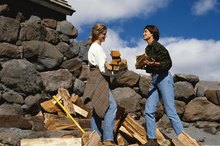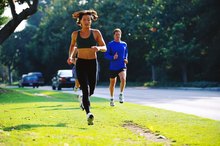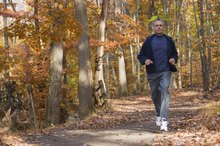What does fact checked mean?
At Healthfully, we strive to deliver objective content that is accurate and up-to-date. Our team periodically reviews articles in order to ensure content quality. The sources cited below consist of evidence from peer-reviewed journals, prominent medical organizations, academic associations, and government data.
- Harvard Health Publications: Calories Burned in 30 Minutes for People of Three Different Weights
- American College of Sports Medicine: Selecting and Effectively Using a Walking Program
- American College of Sports Medicine: Selecting and Effectively Using a Walking Program
The information contained on this site is for informational purposes only, and should not be used as a substitute for the advice of a professional health care provider. Please check with the appropriate physician regarding health questions and concerns. Although we strive to deliver accurate and up-to-date information, no guarantee to that effect is made.
How Many Calories Did I Burn Speed-Walking 7 Miles?
Speed walking is a low-impact form of exercise that can help you manage your weight, strengthen your legs, improve your cardiovascular system and relieve stress. The amount of calories burned while speed walking 7 miles depends on various factors, such as your age and intensity level.
Calories
People of varying body weights will burn a different amount of calories when performing the same activity 1. Harvard Health Publications reports that a person weighing 125 pounds and walking 7 miles at a speed of 3.5 mph will burn approximately 480 calories by walking 7 miles 1. If you weigh 185 pounds, you will likely burn approximately 712 calories by walking an identical distance at the same pace.
Increase the Intensity
Calories Burned Stacking Wood
Learn More
Brisk walking is considered to be moving at the speed of 3 to 4 mph, according to the ACSM. Increasing the intensity of your walk can help you burn more calories. Taking longer strides, pushing off with the toes and swinging your arms vigorously can help you to walk at a faster pace. Incorporating hills and stairs in your walk aids in building lean muscle mass on your glutes and legs, which in turn can help you increase your speed and endurance.
- Brisk walking is considered to be moving at the speed of 3 to 4 mph, according to the ACSM.
- Incorporating hills and stairs in your walk aids in building lean muscle mass on your glutes and legs, which in turn can help you increase your speed and endurance.
Related Articles
References
- Harvard Health Publications: Calories Burned in 30 Minutes for People of Three Different Weights
- American College of Sports Medicine: Selecting and Effectively Using a Walking Program
- Ainsworth BE, Haskell WL, Herrmann SD, et al. 2011 Compendium of Physical Activities: a second update of codes and MET values. Med Sci Sports Exerc. 2011;43(8):1575-81. doi:10.1249/MSS.0b013e31821ece12
- Ainsworth BE, Haskell WL, Herrmann SD, Bassett DR Jr, Tudor-Locke C, Greer JL, Vezina J, Whitt-Glover MC, Leon AS. 2011 Compendium of Physical Activities. Medicine & Science in Sports & Exercise. 2011;43(8):1575-1581. doi:10.1249/mss.0b013e31821ece12.
Writer Bio
Beth Rifkin has been writing health- and fitness-related articles since 2005. Her bylines include "Tennis Life," "Ms. Fitness," "Triathlon Magazine," "Inside Tennis" and others. She holds a Bachelor of Business Administration from Temple University.









